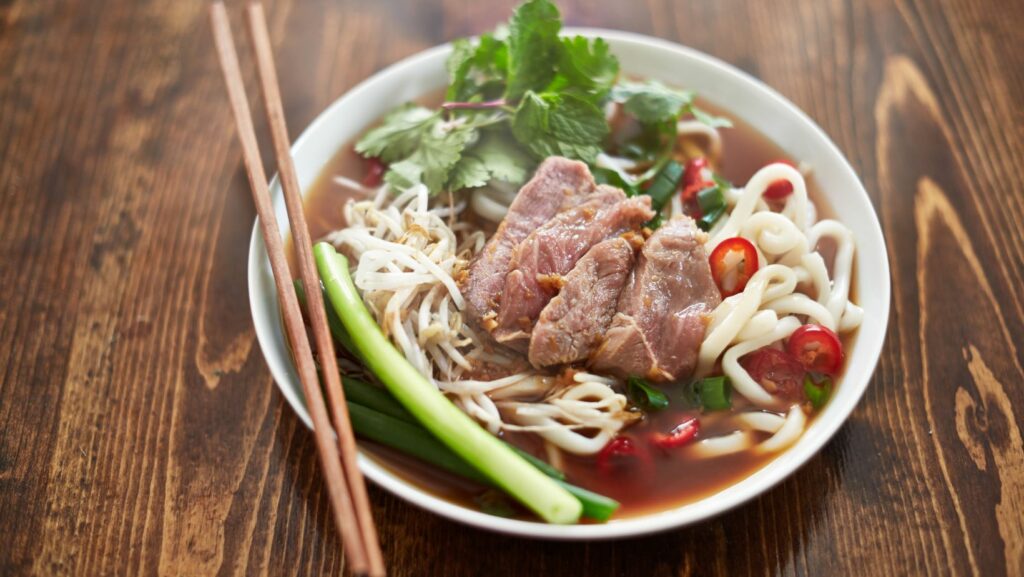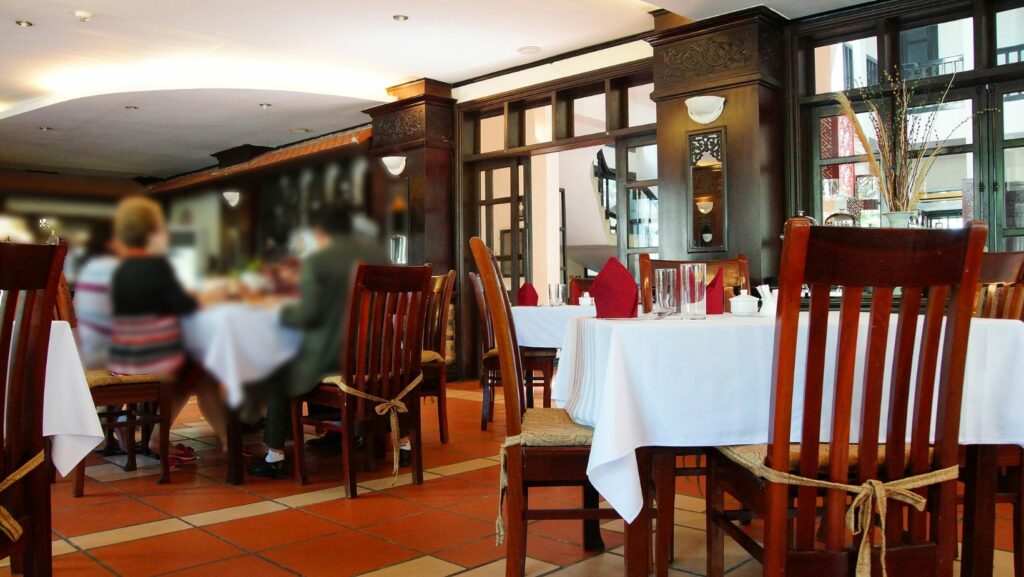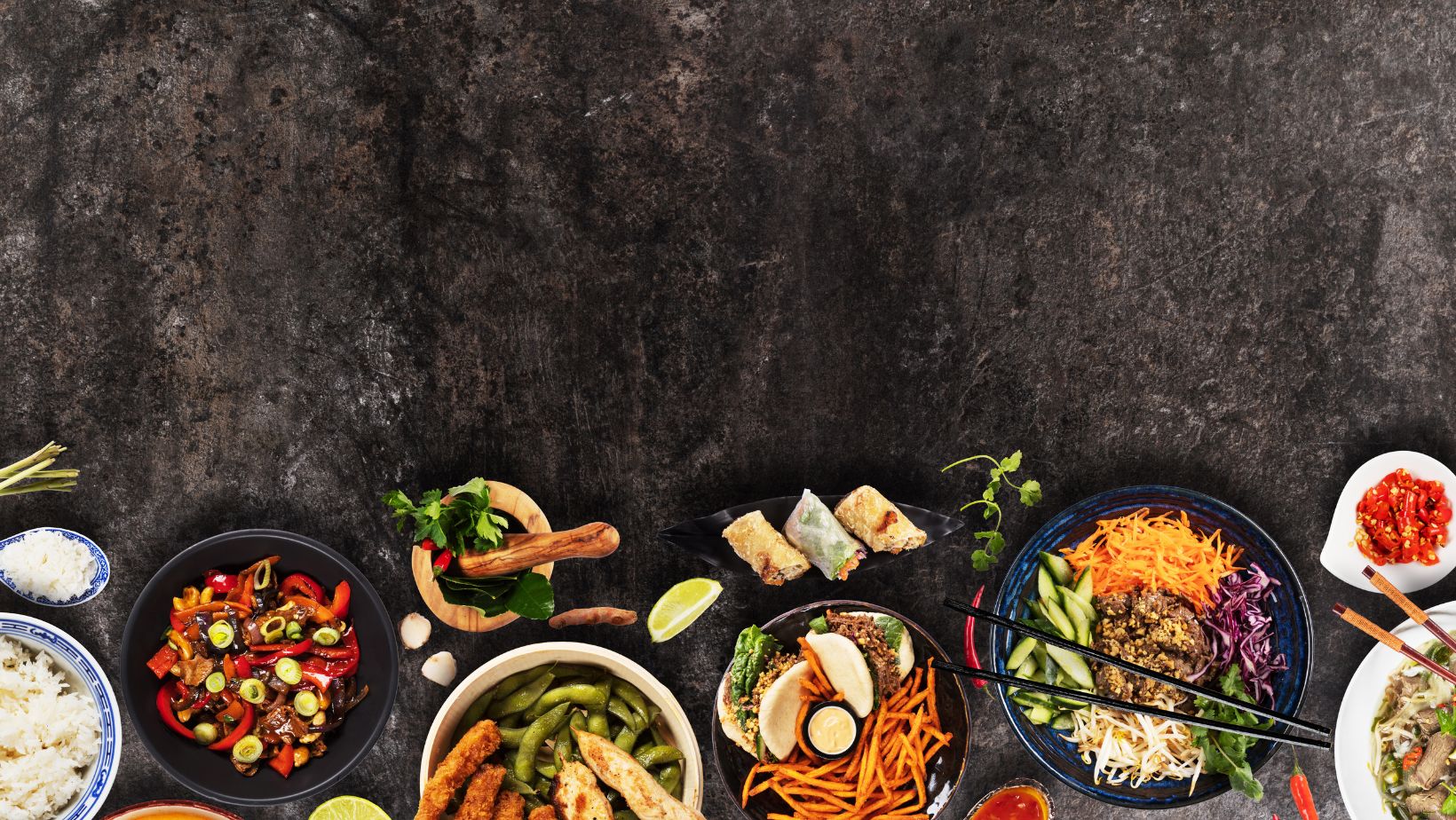
Vietnamese cuisine is celebrated around the world for its vibrant flavors and colorful presentations, but it’s also often lauded for its health benefits. From the bustling street markets of Hanoi to the chic eateries of Ho Chi Minh City, Vietnamese food offers a diverse palette that prioritizes fresh vegetables, lean proteins, and herbs and spices that do more than just tantalize the taste buds—they promote better health.
Is Vietnamese Food Healthy
Vietnamese cuisine stands out for its commitment to freshness and balanced nutrition. This section delves into the elements that contribute to its reputation as a healthy food choice.
Fresh Ingredients and Minimal Oil
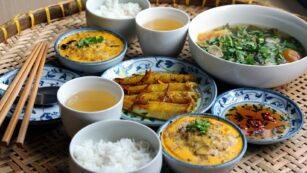 Vietnamese cooking places a strong emphasis on fresh ingredients. Markets typically offer a wide array of freshly picked vegetables, fruits, and meats daily. This focus ensures that dishes are enriched with natural flavors and nutrients which might be lost in processed variants. Moreover, Vietnamese recipes often involve minimal use of oil, relying instead on healthier cooking techniques like steaming, boiling, or grilling. These methods do not only preserve the taste and nutritional value of the food but also reduce the fat content significantly, making the meals lighter and easier to digest.
Vietnamese cooking places a strong emphasis on fresh ingredients. Markets typically offer a wide array of freshly picked vegetables, fruits, and meats daily. This focus ensures that dishes are enriched with natural flavors and nutrients which might be lost in processed variants. Moreover, Vietnamese recipes often involve minimal use of oil, relying instead on healthier cooking techniques like steaming, boiling, or grilling. These methods do not only preserve the taste and nutritional value of the food but also reduce the fat content significantly, making the meals lighter and easier to digest.
Variety of Vegetables and Herbs
Vegetables and herbs are not just side dishes in Vietnamese cuisine; they are integral to most meals. Dishes such as Pho, Banh Xeo (savory pancakes), and fresh spring rolls are laden with greens like basil, mint, cilantro, and lemongrass. These herbs not only impart distinctive flavors but also boast impressive health benefits, providing essential vitamins, antioxidants, and minerals.
Nutritional Benefits of Vietnamese Food
Low in Calories and High in Nutrients
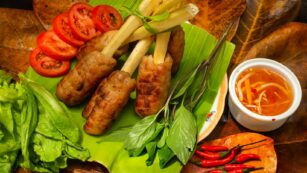 Vietnamese dishes often feature a favorable balance of macronutrients—healthy fats, proteins, and a considerable proportion of carbohydrates—while remaining low in calories. For instance, a typical bowl of Pho includes lean protein from meat or tofu, an abundance of fresh herbs like basil and cilantro, and rice noodles. This combination not only ensures a low-calorie count but also enriches the body with essential vitamins and minerals. Broths in Vietnamese cooking are typically made from simmering meat and bones for hours, extracting flavor naturally without the need for caloric additives, making them both flavorful and good for health.
Vietnamese dishes often feature a favorable balance of macronutrients—healthy fats, proteins, and a considerable proportion of carbohydrates—while remaining low in calories. For instance, a typical bowl of Pho includes lean protein from meat or tofu, an abundance of fresh herbs like basil and cilantro, and rice noodles. This combination not only ensures a low-calorie count but also enriches the body with essential vitamins and minerals. Broths in Vietnamese cooking are typically made from simmering meat and bones for hours, extracting flavor naturally without the need for caloric additives, making them both flavorful and good for health.
Importance of Balanced Meals
A cornerstone of Vietnamese gastronomy is its holistic approach to meals. Each dish strives for a culinary balance—sweet, sour, salty, and spicy flavors are carefully calibrated, and textural contrasts are considered with elements like crunchy vegetables and soft meats. This sense of balance extends to nutrition as well. Meals are designed to provide a mixture of carbohydrates from rice or noodles, proteins from meat, poultry, or aquatic proteins, and fats from natural sources such as fish or plant oils. This balance ensures that meals provide sustained energy without excess calories, supporting overall dietary health and wellness.
Common Dishes in Vietnamese Cuisine
Pho
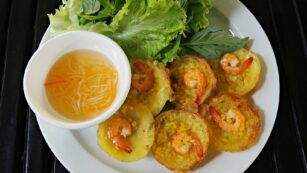 Pho, a traditional Vietnamese soup, consists of broth, rice noodles (banh pho), herbs, and meat, usually beef or chicken. The clear broth is often simmered for hours with spices such as cinnamon and star anise, enriching it with flavor without adding fat. It’s a staple that delivers a hearty dose of lean protein and carbohydrates, with a herb garnish that supplies vitamins and minerals.
Pho, a traditional Vietnamese soup, consists of broth, rice noodles (banh pho), herbs, and meat, usually beef or chicken. The clear broth is often simmered for hours with spices such as cinnamon and star anise, enriching it with flavor without adding fat. It’s a staple that delivers a hearty dose of lean protein and carbohydrates, with a herb garnish that supplies vitamins and minerals.
Spring Rolls
Fresh spring rolls, known as Goi Cuon, are wrapped in rice paper and usually contain shrimp, herbs, pork, rice vermicelli, and other vegetables. The dish is served cold, dipped in a light fish sauce or peanut sauce for extra zest. Spring rolls are low in calories and provide a crisp texture and nutrients from raw vegetables, making them a light, healthy option.
Banh Mi
Banh Mi refers to a Vietnamese sandwich that consists of a French baguette stuffed with a variety of ingredients, including meats like pork, pate, or chicken, accompanied by cilantro, pickled vegetables, cucumber, and hot peppers. It offers a good mix of protein, fiber, and carbohydrates, though it’s slightly higher in calories due to the bread. Banh Mi illustrates the French influence on Vietnamese cuisine while remaining distinctly Vietnamese with its flavors.

